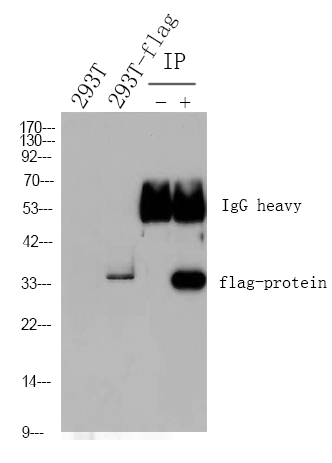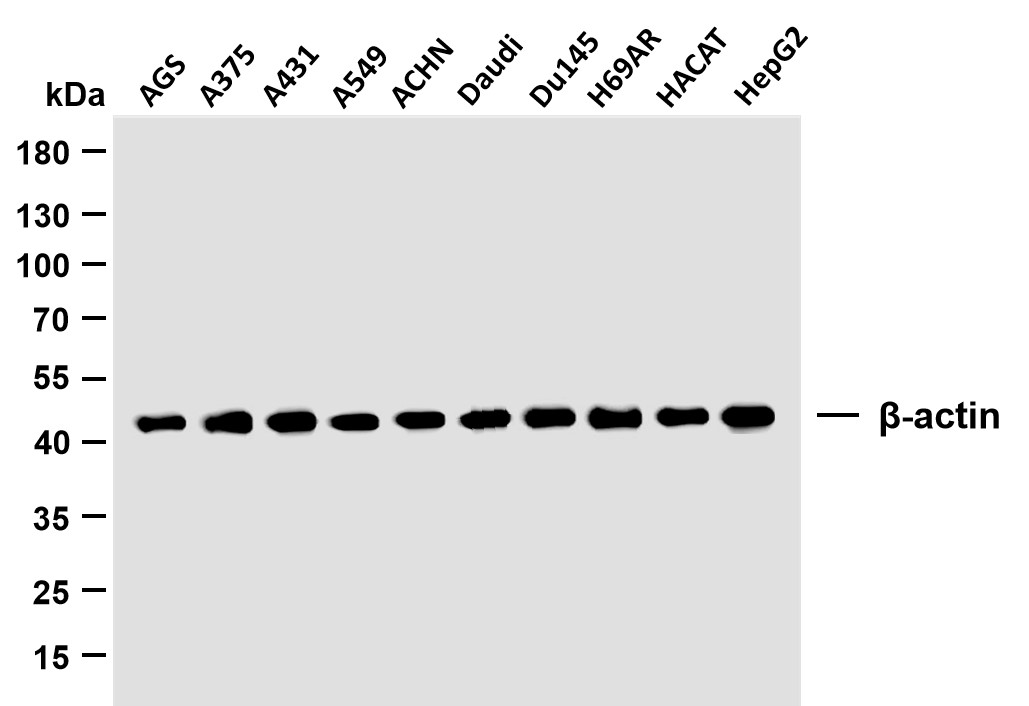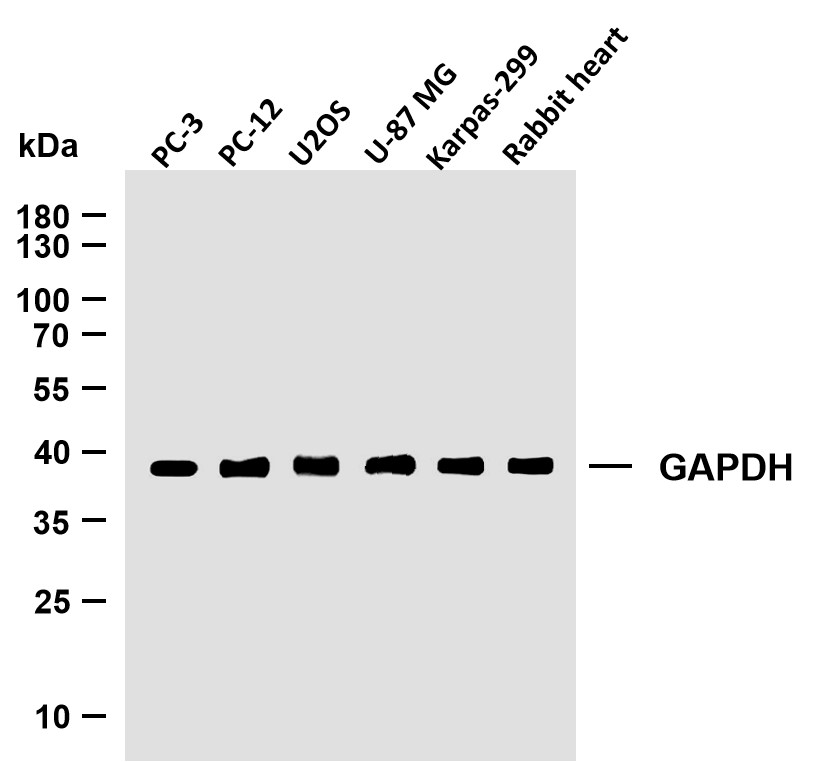
Catalog: YN0530
Size
Price
Status
Qty.
200μL
$450.00
In stock
0
100μL
$280.00
In stock
0
40μL
$150.00
In stock
0
Add to cart


Collected


Collect
Main Information
Target
CAPS2
Host Species
Rabbit
Reactivity
Human, Mouse
Applications
WB, ELISA
MW
142kD (Observed)
Conjugate/Modification
Unmodified
Detailed Information
Recommended Dilution Ratio
WB 1:500-2000; ELISA 1:5000-20000
Formulation
Liquid in PBS containing 50% glycerol, and 0.02% sodium azide.
Specificity
CAPS2 Polyclonal Antibody detects endogenous levels of protein.
Purification
The antibody was affinity-purified from rabbit antiserum by affinity-chromatography using epitope-specific immunogen.
Storage
-15°C to -25°C/1 year(Do not lower than -25°C)
Concentration
1 mg/ml
MW(Observed)
142kD
Modification
Unmodified
Clonality
Polyclonal
Isotype
IgG
Related Products
Antigen&Target Information
Immunogen:
Synthesized peptide derived from part region of human protein
show all
Specificity:
CAPS2 Polyclonal Antibody detects endogenous levels of protein.
show all
Gene Name:
CADPS2 CAPS2 KIAA1591
show all
Protein Name:
Calcium-dependent secretion activator 2 (Calcium-dependent activator protein for secretion 2) (CAPS-2)
show all
Background:
calcium dependent secretion activator 2(CADPS2) Homo sapiens This gene encodes a member of the calcium-dependent activator of secretion (CAPS) protein family, which are calcium binding proteins that regulate the exocytosis of synaptic and dense-core vesicles in neurons and neuroendocrine cells. Mutations in this gene may contribute to autism susceptibility. Multiple transcript variants encoding different isoforms have been found for this gene. [provided by RefSeq, Nov 2009],
show all
Function:
Domain:The PH domain is essential for regulated exocytosis and binds phospholipids.,Function:Calcium-binding protein involved in exocytosis of vesicles filled with neurotransmitters and neuropeptides. Probably acts upstream of fusion in the biogenesis or maintenance of mature secretory vesicles. Regulates neurotrophin release from granule cells leading to regulate cell differentiation and survival during cerebellar development. May specifically mediate the Ca(2+)-dependent exocytosis of large dense-core vesicles (DCVs) and other dense-core vesicles.,PTM:Isoform 2 is phosphorylated upon DNA damage, probably by ATM or ATR.,sequence Caution:Chimera.,sequence Caution:Contaminating sequence. Potential poly-A sequence.,similarity:Contains 1 C2 domain.,similarity:Contains 1 MHD1 (MUNC13 homology domain 1) domain.,similarity:Contains 1 PH domain.,subcellular location:Membrane-associated to vesicles. Strongly enriched in synaptic fractions. Probably localizes to different vesicles compared to CADPS. Enriched on vesicular structures in the parallel fiber terminal of granule cells that are distinct from synaptic vesicles.,subunit:Homodimer (By similarity). Interacts with the dopamine receptor DRD2.,tissue specificity:Widely expressed. Expressed in all adult and fetal tissues examined, with the strongest expression in kidney and pancreas. In brain, it is expressed at high levels in cerebellum, to a lesser degree in cerebral cortex, occipital pole, and frontal and temporal lobes. Only weakly expressed in medulla, spinal cord and putamen.,
show all
Cellular Localization:
Cytoplasmic vesicle membrane ; Peripheral membrane protein ; Cytoplasmic side . Cell junction, synapse. Membrane-associated to vesicles. Strongly enriched in synaptic fractions. Probably localizes to different vesicles compared to CADPS. Enriched on vesicular structures in the parallel fiber terminal of granule cells that are distinct from synaptic vesicles.
show all
Tissue Expression:
Widely expressed. Expressed in all adult and fetal tissues examined, with the strongest expression in kidney and pancreas. In brain, it is expressed at high levels in cerebellum, to a lesser degree in cerebral cortex, occipital pole, and frontal and temporal lobes. Only weakly expressed in medulla, spinal cord and putamen.
show all
Reference Citation({{totalcount}})
Catalog: YN0530
Size
Price
Status
Qty.
200μL
$450.00
In stock
0
100μL
$280.00
In stock
0
40μL
$150.00
In stock
0
Add to cart


Collected


Collect
Recently Viewed Products
Clear allPRODUCTS
CUSTOMIZED
ABOUT US
Toggle night Mode
{{pinfoXq.title || ''}}
Catalog: {{pinfoXq.catalog || ''}}
Filter:
All
{{item.name}}
{{pinfo.title}}
-{{pinfo.catalog}}
Main Information
Target
{{pinfo.target}}
Reactivity
{{pinfo.react}}
Applications
{{pinfo.applicat}}
Conjugate/Modification
{{pinfo.coupling}}/{{pinfo.modific}}
MW (kDa)
{{pinfo.mwcalc}}
Host Species
{{pinfo.hostspec}}
Isotype
{{pinfo.isotype}}
Product {{index}}/{{pcount}}
Prev
Next
{{pvTitle}}
Scroll wheel zooms the picture
{{pvDescr}}



















